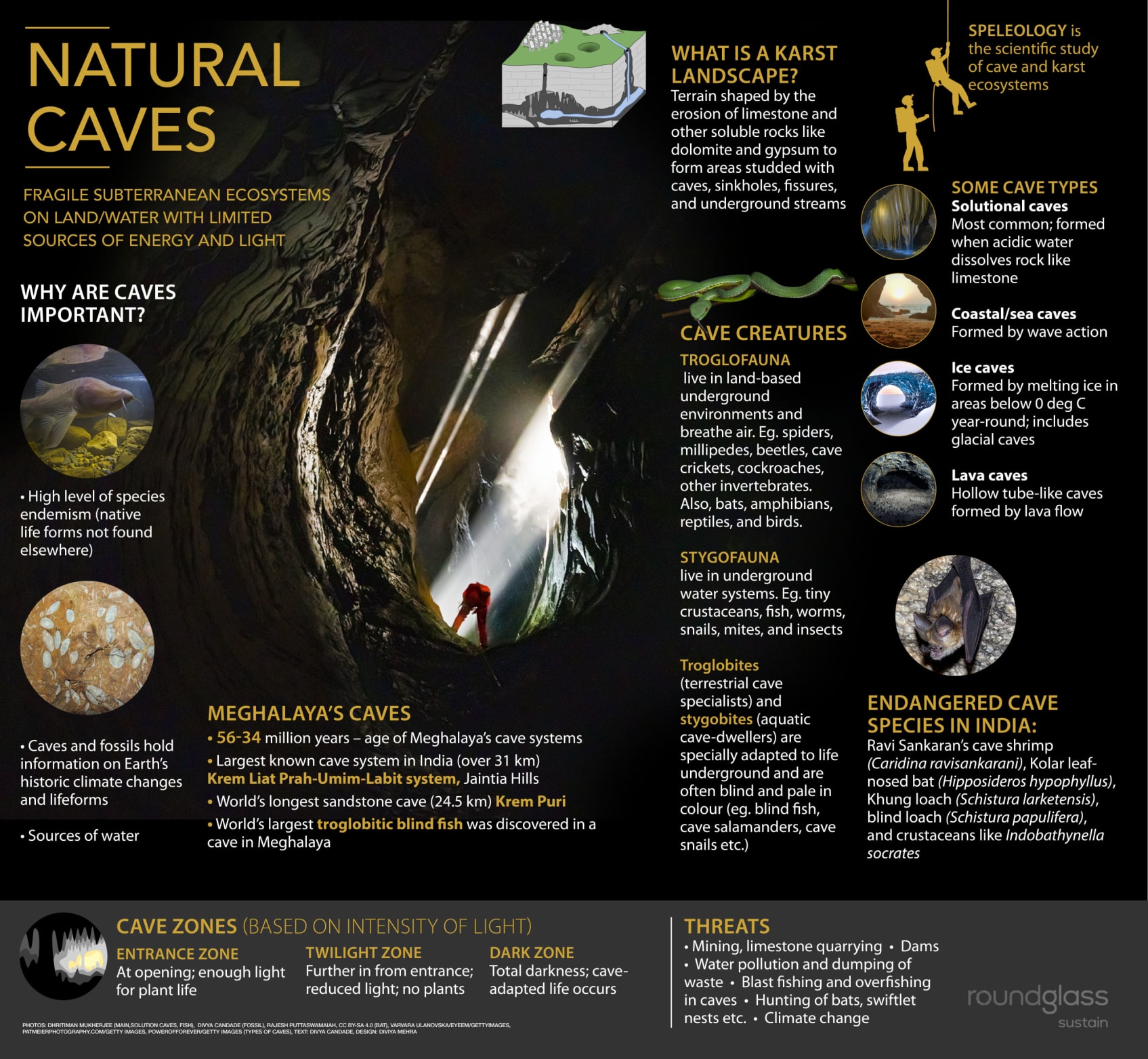 Listen to this article
•
15:34 min
Listen to this article
•
15:34 min
What are caves?
Natural caves are fragile subterranean ecosystems on land or water that exist when natural openings form in the the earth. These ecosystems have limited sources of energy and light.
What is speleology?
Speleology is the scientific study of cave and karst ecosystems. A karst landscape is terrain shaped by the erosion of limestone and other soluble rocks like dolomite and gypsum to form areas studded with caves, sinkholes, fissures, and underground streams.
What animals live inside a cave?
Wildlife in caves can include bats, reptiles, animals like porcupines and bears, aquatic life, birds, insects. Caves are important habitats as they usually have high levels of species endemism especially in the case of cave-adapted life like trogrobites and stygobites.
What are cave zones?
Cave zones are divisions of a cave that are made based on the intensity of light in the zone. Entrance zone is usally at the cave opening and has sufficient light for plant life. Twilight zone is further from the entrance and has reduced light. Dark zone has total darkness and is where cave-adapted life occurs. Microclimatic conditions in the dark zone are usually constant.






